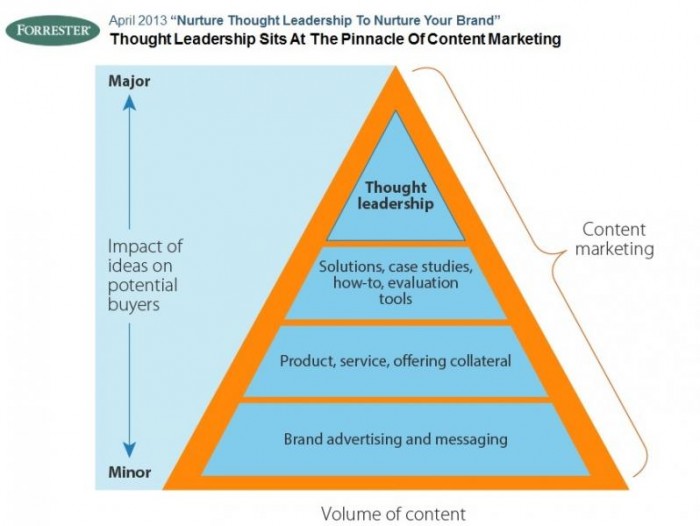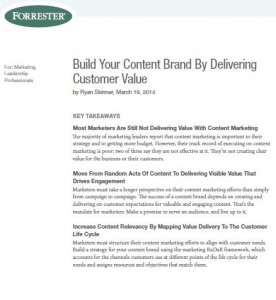Forrester Research is out with a new report on content marketing. It’s titled “Build Your Content Brand By Delivering Customer Value” and its lead author is analyst Ryan Skinner.
The report is $500 to download, and thanks to Michael Skinner’s excellent B2B Marketing Insider blog I can share some highlights. The report concludes that one of the drawbacks of most content marketing efforts is a “campaign” mentality. Effective content marketing needs to be viewed as a long-term, consistent delivery of valuable information to customers and prospects.
Probably the most useful parts of the report are where Forrester identifies the four most important objectives of content marketing, and the top five mistakes companies make with their content marketing. Since strategy always should precede tactics, let’s start with the objectives.
Content marketing should be designed to do the following four things for your company. After each I’ve added a suggestion to help keep your effort on track:
- Pull customers closer by giving away valuable content (Suggestion: periodically evaluate your content, both internally and with third party audiences)
- Amplify the reach of your content by encouraging broad sharing across the social networks of visitors/users (Suggestion: establish this as a KPI and track with your analytics package)
- Reach potential customers early in the purchase process, while they are educating themselves on the product/service (Suggestion: make sure you’ve got lead scoring and prospect lifecycle set up in your marketing automation package)
- Tie your content marketing into your demand funnel through CRM and marketing analytics integration (Yes – you are using one of the leading platforms, aren’t you?)
This list definitely jives with what I see in the engagements I manage for clients. It’s incredibly powerful when content marketing is done right.
How do companies go astray? According to Forrester, here are the five most common mistakes:
- The content adds little or no value to customers or prospects
- Branded content lacks a solid distribution strategy to reach audience
- Lack of sufficient investment to build a true publishing capacity
- Patience — results won’t come immediately
- Failure to connect the content marketing efforts to business outcomes
Unfortunately this list also jives with what I’ve seen at times over the past five years. I’ve written previously on adopting the mindset of a publisher when adding content marketing to a company’s communications program. That mindset can go a long way towards addressing these common content marketing mistakes.
How do your content marketing efforts measure up? It’s encouraging to see best practices emerge that can help companies keep their editorial quality high and their back end analytics effective.

